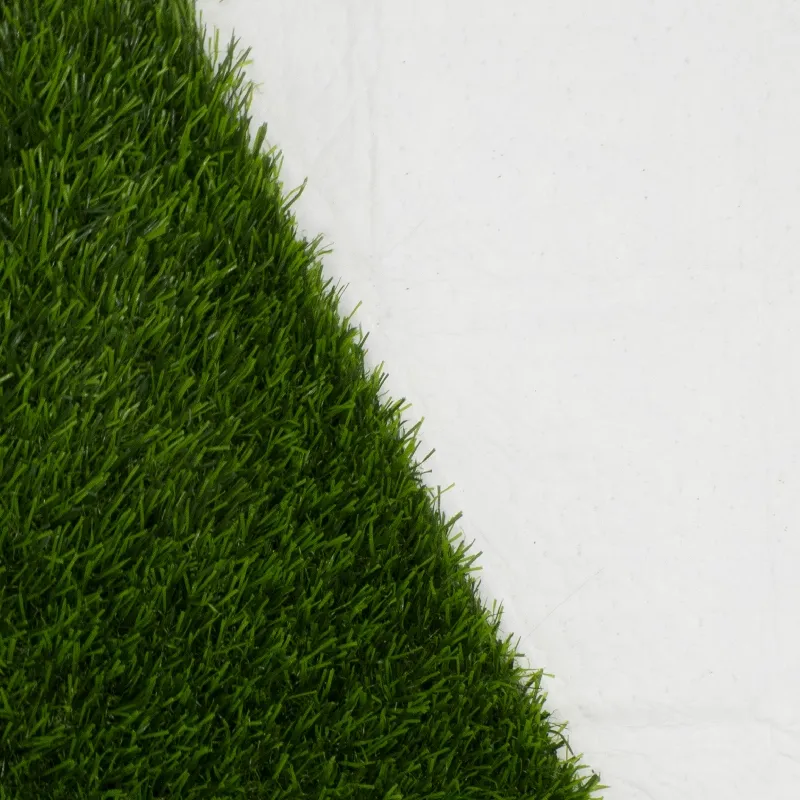
- Afrikaans
- Arabic
- Belarusian
- Bengali
- Czech
- Danish
- Dutch
- English
- Esperanto
- Estonian
- Finnish
- French
- German
- Greek
- Hindi
- Hungarian
- Icelandic
- Indonesian
- irish
- Italian
- Japanese
- kazakh
- Rwandese
- Korean
- Kyrgyz
- Lao
- Latin
- Latvian
- Malay
- Mongolian
- Myanmar
- Norwegian
- Persian
- Polish
- Portuguese
- Romanian
- Russian
- Serbian
- Spanish
- Swedish
- Tagalog
- Tajik
- Thai
- Turkish
- Turkmen
- Ukrainian
- Urdu
- Uighur
- Uzbek
- Vietnamese
Installing Synthetic Turf for a Lush and Maintenance-Free Lawn Experience
Nov . 10, 2024 17:39 Back to list
Laying Artificial Grass A Comprehensive Guide
Artificial grass, often referred to as synthetic turf, has surged in popularity over recent years, and for good reason. It offers the beauty of a lush lawn without the maintenance hassle. Whether it's for a residential backyard, a commercial landscape, or a sports field, laying artificial grass can transform an area into a beautiful, green oasis. This article aims to provide a thorough understanding of how to lay artificial grass, covering the necessary materials, step-by-step instructions, and maintenance tips.
Materials Needed
Before embarking on the project of laying artificial grass, gather the following materials
1. Artificial Grass Choose high-quality synthetic turf that resembles natural grass. Consider factors such as blade height, color, and UV resistance.
2. Base Materials A solid base is crucial for a long-lasting installation. Typically, crushed granite or decomposed granite is used, as it compacts well and provides good drainage.
3. Weed Barrier Fabric This prevents weeds from growing through the artificial grass.
4. Adhesive or Nails Depending on the type of installation, you may need turf adhesive, nails, or staples to secure the grass.
5. Accessories Tools such as a utility knife, a shovel, a roller, and a broom will be necessary for a smooth application.
Step-by-Step Instructions
Step 1 Preparing the Area
Begin by preparing the area where the artificial grass will be installed. Remove any existing grass, plants, or debris. Excavate the area to a depth of approximately 3-4 inches, depending on the thickness of your base materials and turf.
Step 2 Installing the Base
Once the area is clear, create a base using crushed granite or decomposed granite. Spread about 2-3 inches of the base material evenly across the area. Use a rake to level it out, and then compact it using a roller or plate compactor. This will ensure a sturdy and stable foundation that allows for proper drainage.
Step 3 Laying the Weed Barrier
laying artificial grass

After the base has been compacted, lay down a weed barrier fabric over the entire area. This will help prevent weeds from pushing through the artificial grass and ensure a clean, low-maintenance lawn.
Step 4 Unrolling and Cutting the Grass
Next, unroll the artificial grass. If installing multiple pieces, make sure the blades of grass are all facing the same direction for a more natural look. Use a utility knife to cut the grass to fit the shape of the area.
Step 5 Securing the Grass
Lay the pieces of artificial grass side by side, ensuring there are no gaps. If necessary, use adhesive or turf nails to secure the edges and seams. For seams, it’s best to use adhesive specifically designed for turf to achieve a seamless appearance.
Step 6 Adding Infill (if necessary)
Some types of artificial grass benefit from infill, which can help to keep the blades upright and provide additional cushioning. Common materials for infill include silica sand or rubber granules. Spread the infill evenly with a broom, then use a roller to ensure it is well compacted.
Maintenance Tips
One of the most attractive aspects of artificial grass is its low maintenance requirements. However, routine care is still necessary to keep it looking its best. Here are a few maintenance tips
- Regular Cleaning Remove debris such as leaves and twigs using a leaf blower or broom. Regular cleaning helps to prevent buildup and maintains the grass's appearance.
- Hosing Down Occasionally rinse the turf with water to remove dust, pet waste, or other substances. This is especially important in high-traffic areas or if you have pets.
- Dealing with Odors If your artificial grass is used by pets, consider using a pet-safe deodorizer to combat any unpleasant scents.
- Check for Damage Periodically inspect the grass for any tears or damages. If you notice any issues, it's advisable to repair them promptly to maintain the integrity of the installation.
Conclusion
Laying artificial grass is a project that can yield significant aesthetic and practical benefits. With careful planning and execution, homeowners and businesses can enjoy the plush look of a green lawn without the associated maintenance. By following these steps and guidelines, anyone can successfully install artificial grass and benefit from its beauty for years to come. Whether for recreational purposes, beautification, or convenience, artificial grass is an excellent choice for various applications.
-
The Benefits of Artificial Turf for Indoors
NewsJul.15,2025
-
How Artificial Grass Suppliers Ensure Quality Products
NewsJul.15,2025
-
Artificial Grass and Pets: A Space for Relaxation
NewsJul.08,2025
-
Balcony & Outdoor Decoration with Artificial Grass
NewsJul.08,2025
-
Best Indoor Artificial Grass for Home
NewsJul.07,2025
-
Best Pet Turf for Dogs: Safe & Durable Artificial Grass Options
NewsJul.07,2025
Products categories









